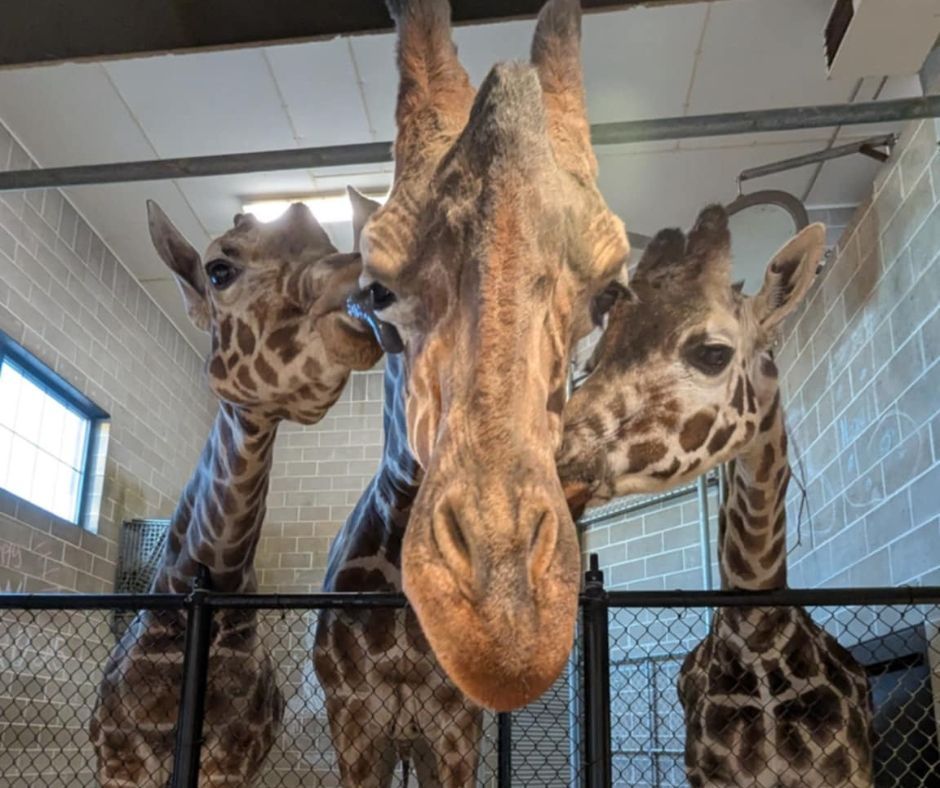- Understanding the significance of animal behavior in zoo management
- Zuri’s behavioral changes and implications for her well-being
- The role of interdisciplinary collaboration in addressing animal health concerns
- Balancing animal welfare with public engagement in wildlife exhibits
- The importance of adaptive strategies in wildlife conservation and zoo practices
In the complex landscape of zoo management, understanding animal behavior plays a crucial role in ensuring the health and well-being of the creatures in our care. The recent temporary closure of the Giraffe Feeding Experience sheds light on this intricate aspect of wildlife management. Our decision was primarily driven by the notable behavioral change exhibited by Zuri, a 20-year-old female giraffe, who conveyed through her actions that she needed space from human interaction. This article explores the considerations involved in such decisions, highlighting the importance of placing animal welfare at the forefront.
Zuri’s shift in behavior provides valuable insights into her health and emotional state. Although she appeared "cranky" and distanced herself from humans, these changes are often indicative of underlying issues. In animals, especially those that can’t verbalize discomfort, changes in demeanor can signal health discrepancies or hormonal shifts. By attentively observing these signs, zoo staff can respond appropriately, ensuring the animal receives the attention it needs. Zuri’s recent attitude suggests she may have been experiencing discomfort similar to common human ailments such as stomach issues. Acknowledging these behavioral signals allows for timely intervention that prioritizes Zuri’s comfort and health.
Effective zoological practices harness the power of interdisciplinary collaboration, a strength that has been mobilized in Zuri’s case. Specialists including veterinarians, animal behaviorists, and giraffe care experts from across the nation contribute their knowledge to interpret Zuri’s behavior accurately. This collaboration ensures a multi-faceted approach to diagnosis and care, highlighting the necessity of diverse expertise in wildlife management. While specific causes of Zuri’s behavior remain undetermined, the interdisciplinary efforts underscore the commitment to proactive care and comprehensive understanding.
Balancing animal welfare with public engagement presents a unique challenge for zoos. Interactive experiences like the Giraffe Feeding Experience are crucial for fostering human-animal connections and educating the public about wildlife conservation. However, maintaining the well-being of the animals is paramount. Zoos must continually evaluate the impact of public interactions on animal health, adjusting practices as needed to prevent stress or discomfort. Zuri’s case emphasizes the importance of being responsive and flexible, demonstrating that animal welfare takes precedence, even when it involves postponing public activities.
Adaptive strategies are essential for the advancement of wildlife conservation and effective zoo practices. The situation with Zuri illustrates the need for agility in responding to changing animal behaviors and conditions. By implementing trial practice sessions to reintroduce Zuri to group settings, the zoo is adopting a cautious, customized approach to assess her readiness for public interactions. Such adaptive measures demonstrate a commitment to addressing animal needs dynamically, ensuring that their well-being is continuously prioritized alongside conservation and educational goals.
Zuri’s experience offers a transparent look into the thoughtful decision-making processes that guide zoo management when faced with animal behavioral changes. The lessons extend beyond immediate actions, underscoring a broader commitment to informed, compassionate care that respects the intrinsic needs of wildlife. The Giraffe Update serves as an educational example of how zoos navigate the delicate balance between fostering public engagement and ensuring the creatures under their wings thrive in environments that cater to their health and happiness.
*****
Source Description
*Giraffe Update*
You may have “herd” that we recently closed the Giraffe Feeding Experience until further notice and we want to explain why. Our 20-year-old female giraffe, Zuri, was being quite “cranky” with people. In her own way, she was telling us that she wanted space and was not in the mood to spend much time with us humans. Her behavior was not something we had seen from her before, so we decided to close the Feeding to give Zuri and her friends, Nigel and Eddie, some space and quiet time.
We have monitored her carefully, run tests, worked with our veterinary team, and even spoken to other giraffe care experts across the country, but we haven’t been able to determine the exact cause of her behavior. It’s possible that Zuri was experiencing something like a tummy ache, or a shift in hormones – something that caused her to feel “off.” As we humans know, it’s easy to feel cranky when we don’t feel 100% like ourselves! Some quiet time is sometimes just what we need to help us feel better.
Zuri’s behavior seems to be getting back to normal. We recently started some “practice sessions” to gauge her comfort level with being near groups of people (starting with very small groups!) and participating willingly in the Feeding Experience. We plan to continue these practice sessions a minimum of one week, potentially longer based on how things go, until we feel confident that Zuri is comfortable and feeling more like herself.
Zuri is the one who will tell us when she’s ready and we’ll post an update here on our social channels as soon as we’re able to reopen the feeding. We know how much you all love to feed and interact with the giraffes and we greatly appreciate your support and understanding during this time!

